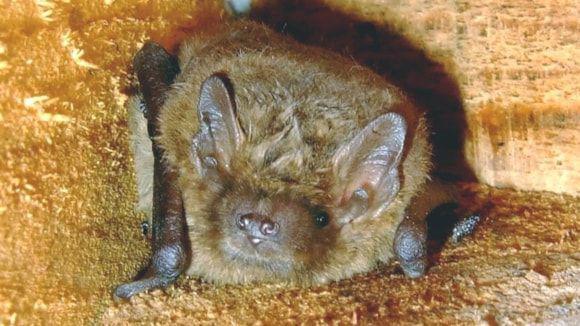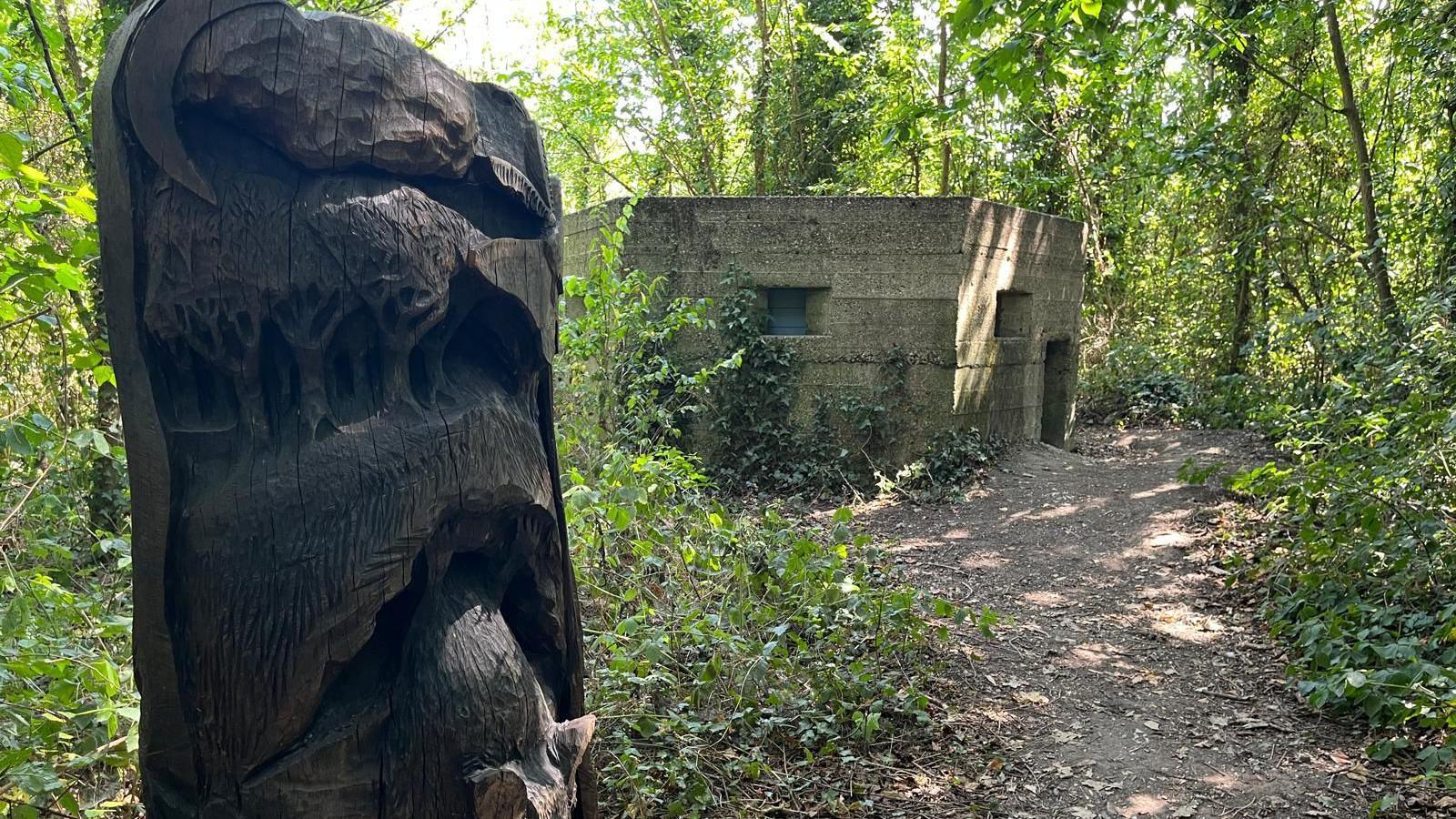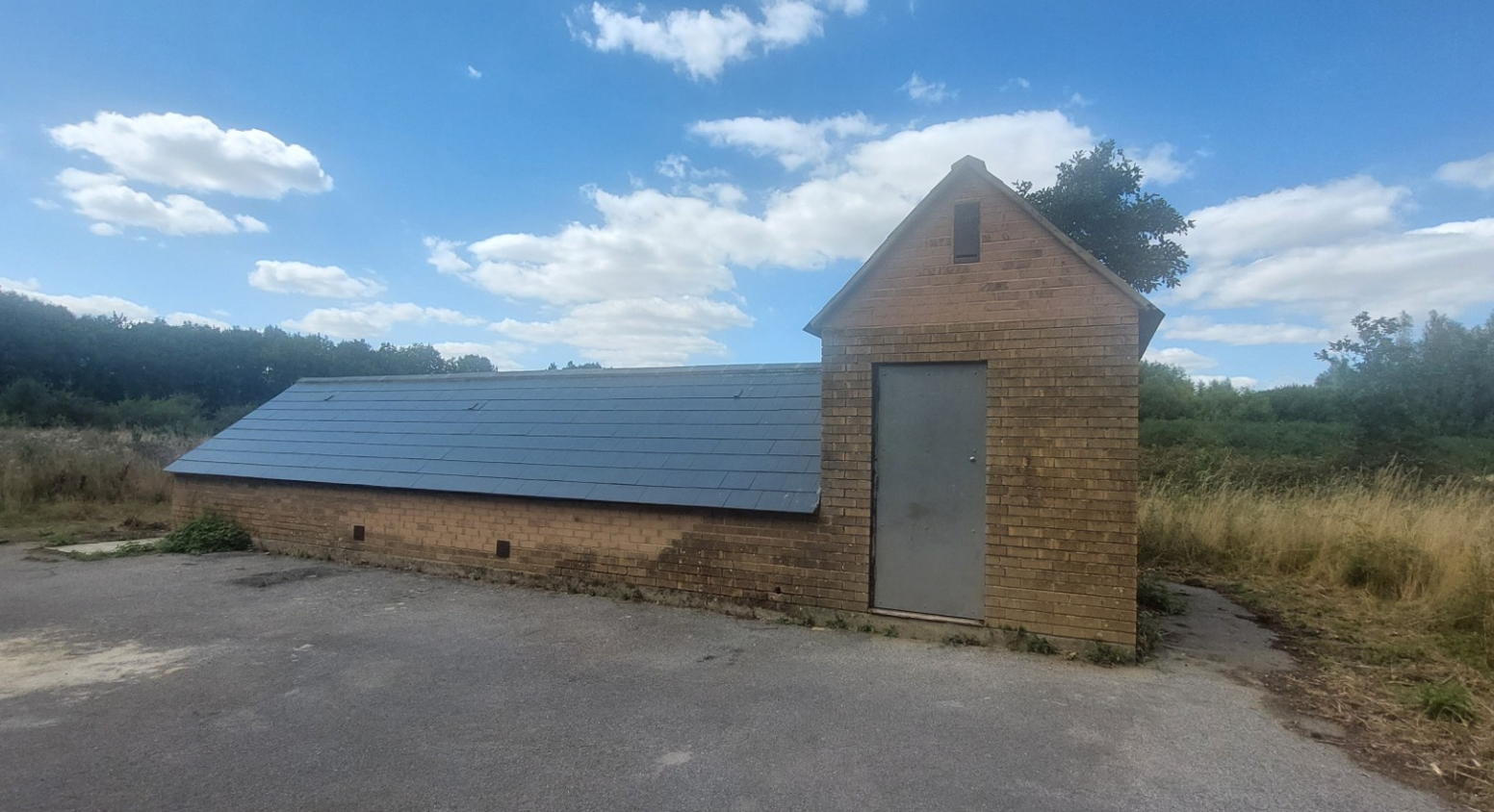Pumping station and WW2 pillbox converted for bats

A soprano pipistrelle bat was identified at the former pumping station on 21 October
- Published
A former pumping station and a World War Two pillbox have been converted into accommodation for bats in two separate projects.
The old Bournemouth Water facility in Ferndown, Dorset, has been decked out with bat-friendly features including special tiles, bat boxes, baffles and a dormer fly-in entrance.
The wartime bunker in Christchurch has been transformed by blocking up windows and installing a grille to protect bats from disturbance.
The projects, by Bournemouth Water and South West Water and by Bournemouth Christchurch and Poole Council (BCP), aim to address habitat loss for the elusive mammals.

A carved sculpture has been installed to highlight the work
The conversion of the redundant 1980s pump building near Longham Lakes was completed in April and recent surveys confirmed its first residents - soprano pipistrelle bats - had moved in.
The roost is designed for summer and winter use, with cool underground chambers for hibernation and warmer loft spaces and boxes for maternity colonies.
Paul McNie, South West Water's Sampling and Environmental Manager, said: "We like to think of this as a kind of bat house renovation project.
"The old building was no longer serving its original purpose and was deteriorating, making it unsafe, so we've reimagined it as a safe space for wildlife."
More from Dorset
Plan agreed to save 'iconic' beachfront palm trees
- Published31 October
Real Housewives star on her 'idyllic' childhood
- Published31 October
Council commits to keeping libraries open
- Published31 October
The pillbox in Mudeford Wood once helped defend RAF Christchurch but, like the pumping station, has been transformed into a dedicated bat habitat, known as a hibernaculum.
The area - a designated Site of Nature Conservation Interest - is already home to common pipistrelle, brown long-eared, and serotine bats.
The project was financed by Heathland Mitigation Funding, paid by developers building near protected heathlands.

The former pumping station in Ferndown has been given a new lease of life
BCP's climate response councillor Andy Hadley said the pillbox was at risk of being "lost to the community due to anti-social behaviour".
"It's wonderful to see it given a new purpose - supporting our native wildlife whilst celebrating the site's fascinating history," he said.
Local bat ecologist Colin Morris said: "Once the word gets around in the batty world, it's likely to become a regular, long-term, safe and secure haven for them during the important hibernation period."
Get in touch
Do you have a story BBC Dorset should cover?